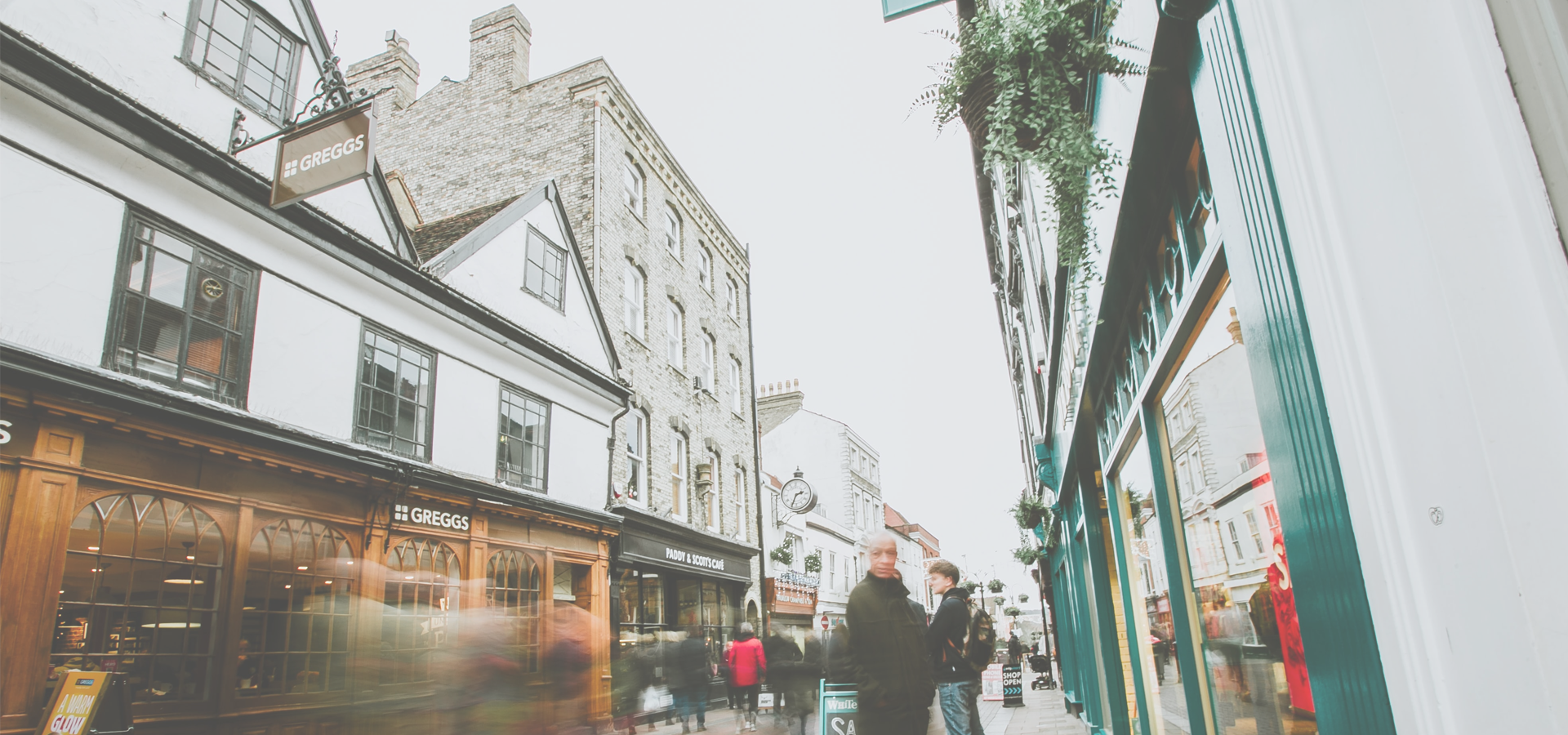🏴 Architect/Painter Basil Oliver is associated with Bury St Edmunds. He was elected a Fellow of the Royal Institute of British Architects (FRIBA) in 1920.
Bury St Edmunds, Suffolk, England, United Kingdom
🏴 Bury St Edmunds, commonly referred to locally as Bury, is a historic market, cathedral town and civil parish in Suffolk, England. Bury St Edmunds Abbey is near the town centre. Bury is the seat of the Diocese of St Edmundsbury and Ipswich of the Church of England, with the episcopal see at St Edmundsbury Cathedral.
The town, originally called Beodericsworth, was built on a grid pattern by Abbot Baldwin around 1080. It is known for brewing and malting (Greene King brewery) and for a British Sugar processing factory, where Silver Spoon sugar is produced. The town is the cultural and retail centre for West Suffolk and tourism is a major part of the economy.
Tourist Industry The Angel Hotel, a Georgian building on Angel Hill, was used by Charles Dickens while giving readings in the nearby Athenaeum and mentioned in The Pickwick Papers. Angelina Jolie also used the hotel as a base during the filming of Tomb Raider. A coaching inn has stood on this spot since the 15th century.
Brewing The nation's largest British-owned brewery, Greene King, is situated in Bury St Edmunds, as is the smaller Old Cannon Brewery. Just outside the town, on the site of RAF Bury St Edmunds, is Bartrums Brewery, originally based in Thurston.
The Greene King pub The Nutshell is situated in the centre of the town, and is one of several that claim to be Britain's smallest public house.
Sugar Beet Bury's largest landmark is the British Sugar factory near the A14, which processes sugar beet into refined crystal sugar. It was built in 1925 when the town's MP, Walter Guinness, was Minister of Agriculture, and for many of its early years was managed by Martin Neumann, former manager of a sugar beet refinery in Šurany, then part of Czechoslovakia. Neumann was invited by the British government to oversee the refinement of sugar in Bury St Edmunds and, with his family, immigrated to the United Kingdom. The actor and writer Stephen Fry is a grandson of Martin Neumann, as recounted in the BBC programme Who Do You Think You Are?
The refinery processes beet from 1,300 growers. 660 lorry-loads of beet can be accepted each day when beet is being harvested. Not all the beet can be crystallised immediately, and some is kept in solution in holding tanks until late spring and early summer, when the plant has spare crystallising capacity. The sugar is sold under the Silver Spoon name (the other major British brand, Tate & Lyle, is made from imported sugar cane). By-products include molassed sugar beet feed for cattle and LimeX70, a soil improver. The factory has its own power station, which powers around 110,000 homes. A smell of burnt starch from the plant is noticeable on some days.
Bury St Edmunds, Suffolk, England, United Kingdom

Bury St Edmunds has a population of over 40,660 people. Bury St Edmunds also forms the centre of the wider West Suffolk district which has a population of over 170,756 people. It is also a part of the larger Suffolk County.
To set up a UBI Lab for Bury St Edmunds see: https://www.ubilabnetwork.org Twitter: https://twitter.com/UBILabNetwork
Twin Towns, Sister Cities Bury St Edmunds has links with:
🇫🇷 Compiègne, France 🇧🇪 Huy, Belgium 🇩🇪 Kevelaer, Germany 🇨🇳 Xi'an, China-
Basil Oliver |
-
Stephen Ernest Dykes Bower |
🏴 Architect Stephen Ernest Dykes Bower is associated with Bury St Edmunds. In addition to architecture he was a notable designer of candlesticks altar frontals, vestments and painted decoration.
-
Robert Adam |
🏴 Architect/Furniture Designer/Interior Decorator Robert Adam is associated with Bury St Edmunds. He was acknowledged as the leading architect in Britain in the 1750s and the 1780s.
🇫🇷 Saint-Gaudens 0.724
🏴 Southend-on-Sea 0.735
🏴 Sittingbourne 0.74
🇫🇷 Montmorillon 0.872
🏴 Colchester 0.903
Locations Near: Bury St Edmunds 0.7183,52.2474
🏴 Sudbury 0.599,52.141 d: 14.3
🏴 Stowmarket 1,52.19 d: 20.2
🏴 Colchester 0.903,51.892 d: 41.5
🏴 Braintree 0.555,51.881 d: 42.2
🏴 Ipswich 1.15,52.05 d: 36.7
🏴 Dereham 0.94,52.681 d: 50.5
🏴 Ely 0.25,52.383 d: 35.2
🏴 Maldon 0.676,51.732 d: 57.4
🏴 Saffron Walden 0.243,52.022 d: 41
🏴 Chelmsford 0.474,51.737 d: 59.2
Antipodal to: Bury St Edmunds -179.282,-52.247
🇹🇴 Nuku'alofa -175.216,-21.136 d: 16538
🇦🇸 Pago Pago -170.701,-14.279 d: 15724.9
🇼🇸 Apia -171.76,-13.833 d: 15691.4
🇵🇫 Papeete -149.566,-17.537 d: 15365.2
🇺🇸 Hilo -155.089,19.725 d: 11675.7
🇺🇸 Maui -156.446,20.72 d: 11604.4
🇺🇸 Maui County -156.617,20.868 d: 11592.8
🇺🇸 Wailuku -156.505,20.894 d: 11587.2